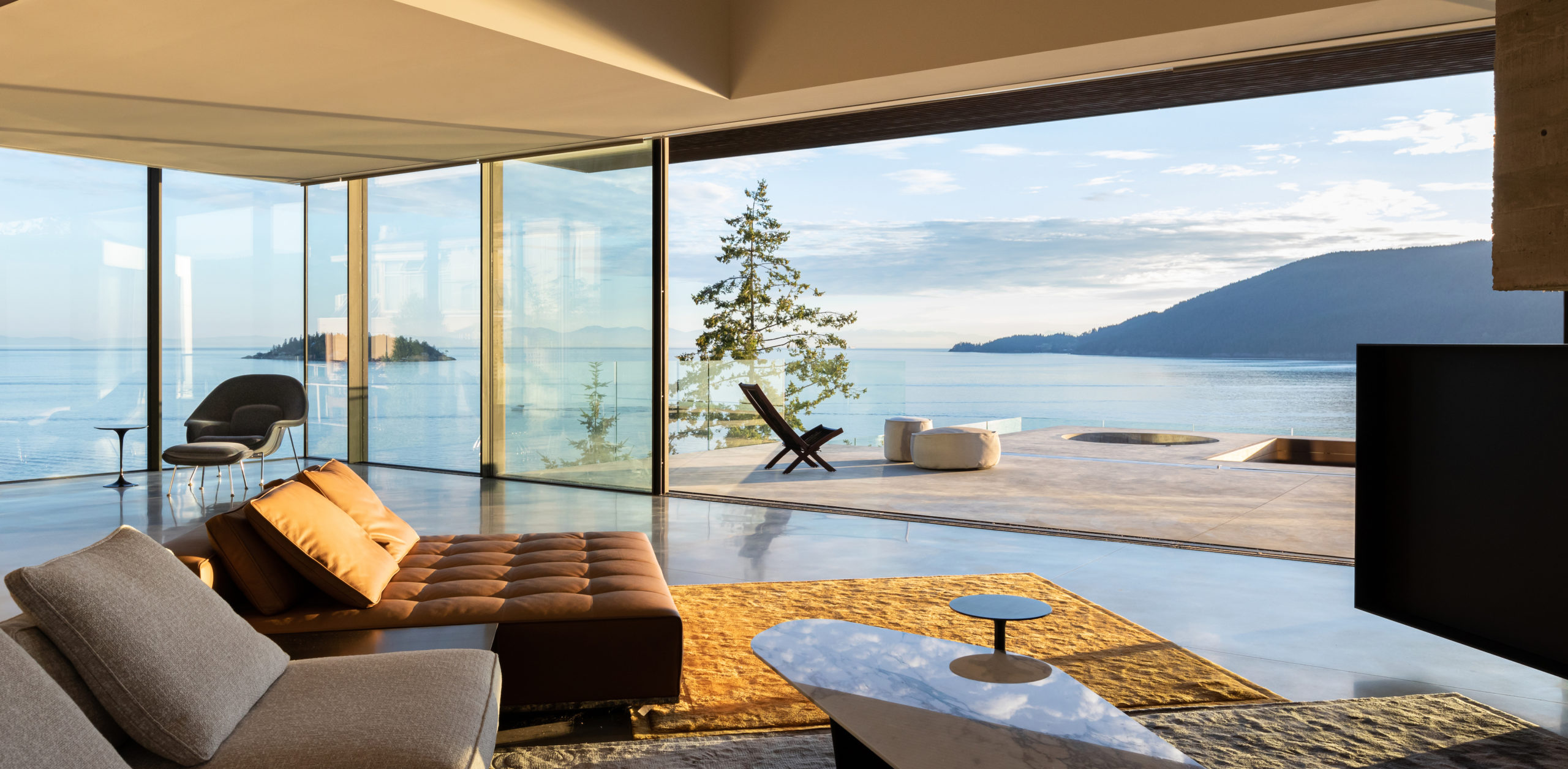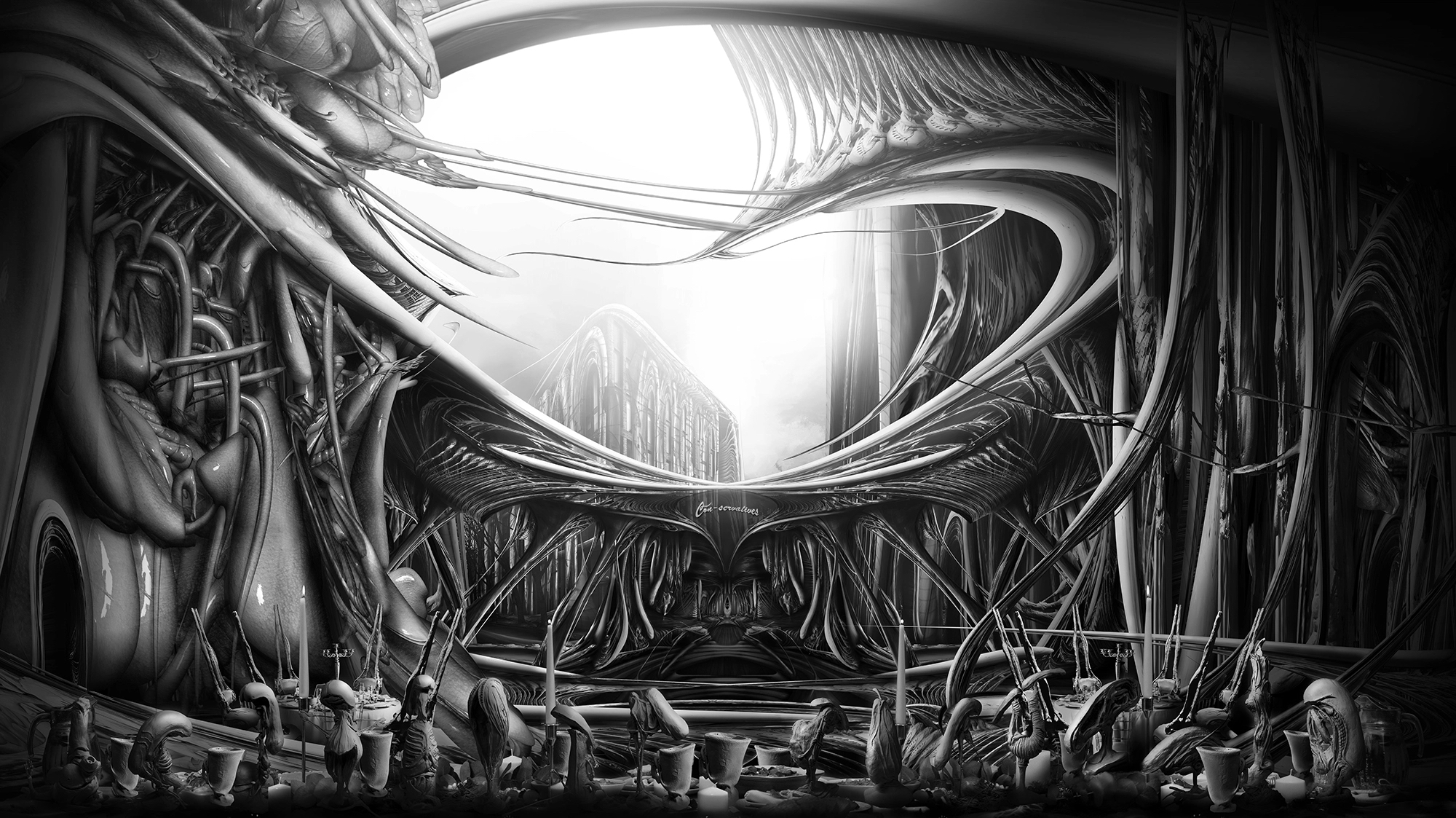Feast your eyes on the world's best architectural representation: the 2025 Vision Awards have been announced! Sign up for the program newsletter for future updates.
When it comes to architectural photography, Ema Peter is a force to be reckoned with. In the past 10 years, she has worked with some of the largest architectural, interior design and engineering firms in North America. Ema’s photography has helped many of these firms reach award-winning status. Her images have been published in Architectural Digest, Objekt International, Dwell, Wired, New York Times and many more.
To celebrate the launch of the 3rd Annual One Photo Challenge, we invited Ema, who is also a juror for the competition, to share insights into her craft. A truly global and enthusiastic audience attended the talk. We had people tuning in from Angola to Australia, plus large contingents from Bulgaria and Vancouver. To reach an even wider audience, the recorded session is now available free on-demand! Click the button below to watch now:
Additionally, we’re sharing some of Ema’s inspiring insights about the power of architectural photography. Plus, keep scrolling for a complete list of all of the buildings, photographers and locations shown and referenced throughout the presentation.
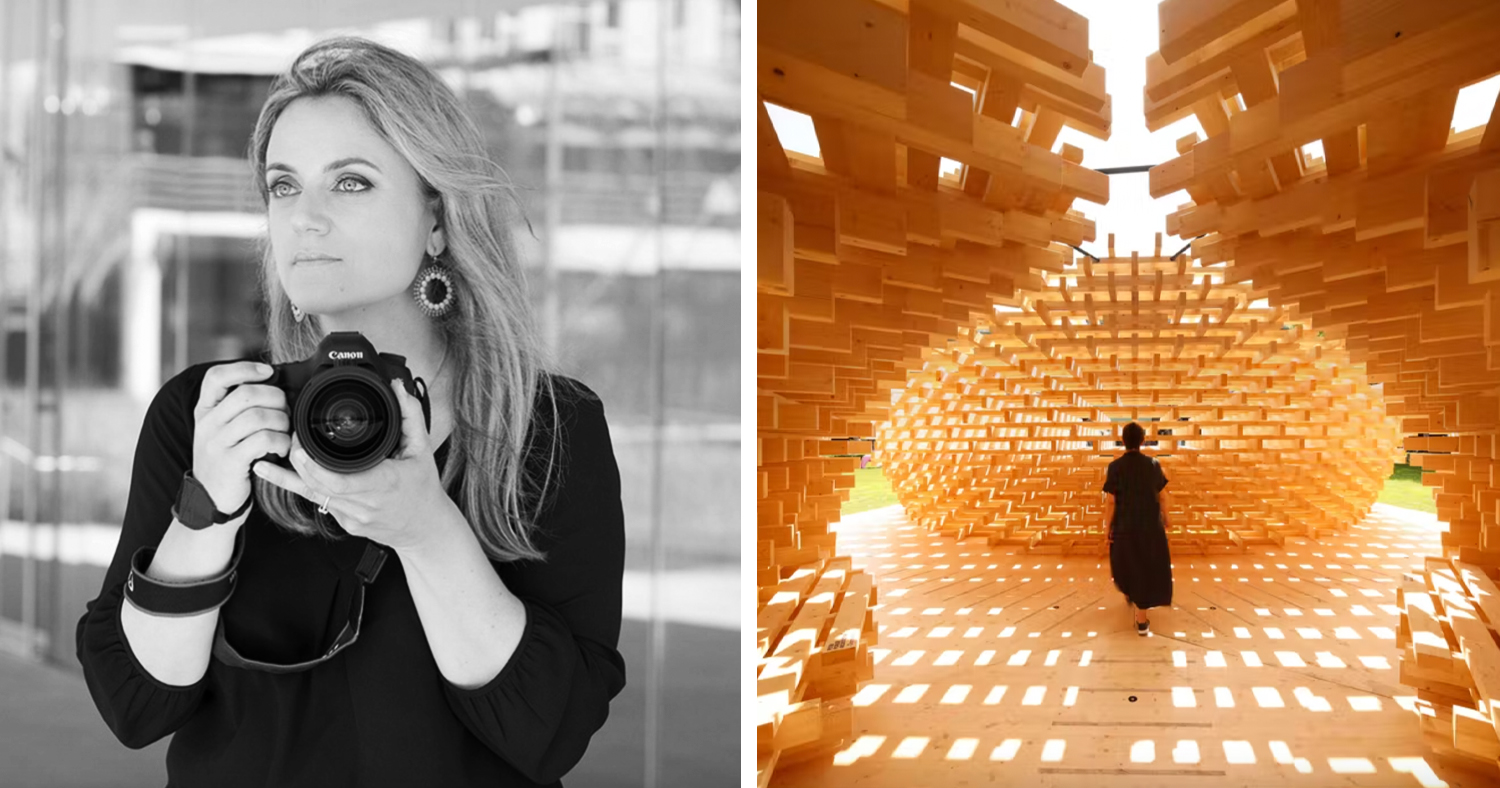
Left: Ema Peter; Right: Future Space Pavilion by Peter Pichler Architecture | Photograph by Ema Peter Photography
On what photography has lost in the revolution from film to digital:
“One of the really lost art of photography is how to work with the light, how to feel the natural light. In this moment, I can close my eyes when there’s shadow and light and I can feel the changes of light even when my eyes are closed.”
On learning to look at the city and architecture in a new way (through René Burry’s lens), and on falling in love with the love affair between photography and architecture:
“We’ve gotten used to taking dry images, with the perfect dusk and the perfect sunset, the perfect people, we even pay models to walk by, but in Burry’s work, I saw a way of taking an image that makes the viewer want to be there, experiencing the building. So I think we need to look a little bit more into the poetry of things. We need to not be there to record. We need to be there to feel and to project to our viewers exactly that kind of feeling.”
Paraphrasing Henri Cartier-Bresson:
“When the heart, the eye and the lens align, this is your moment when you create an exceptional image… You have to feel it when you are photographing.”
On looking to photojournalists as inspiration and the reason why photographers should spend time appreciating each others’ work:
“The eye is a muscle, the eye remembers striking images. The eye learns. It’s not only our brain — our eye learns.”
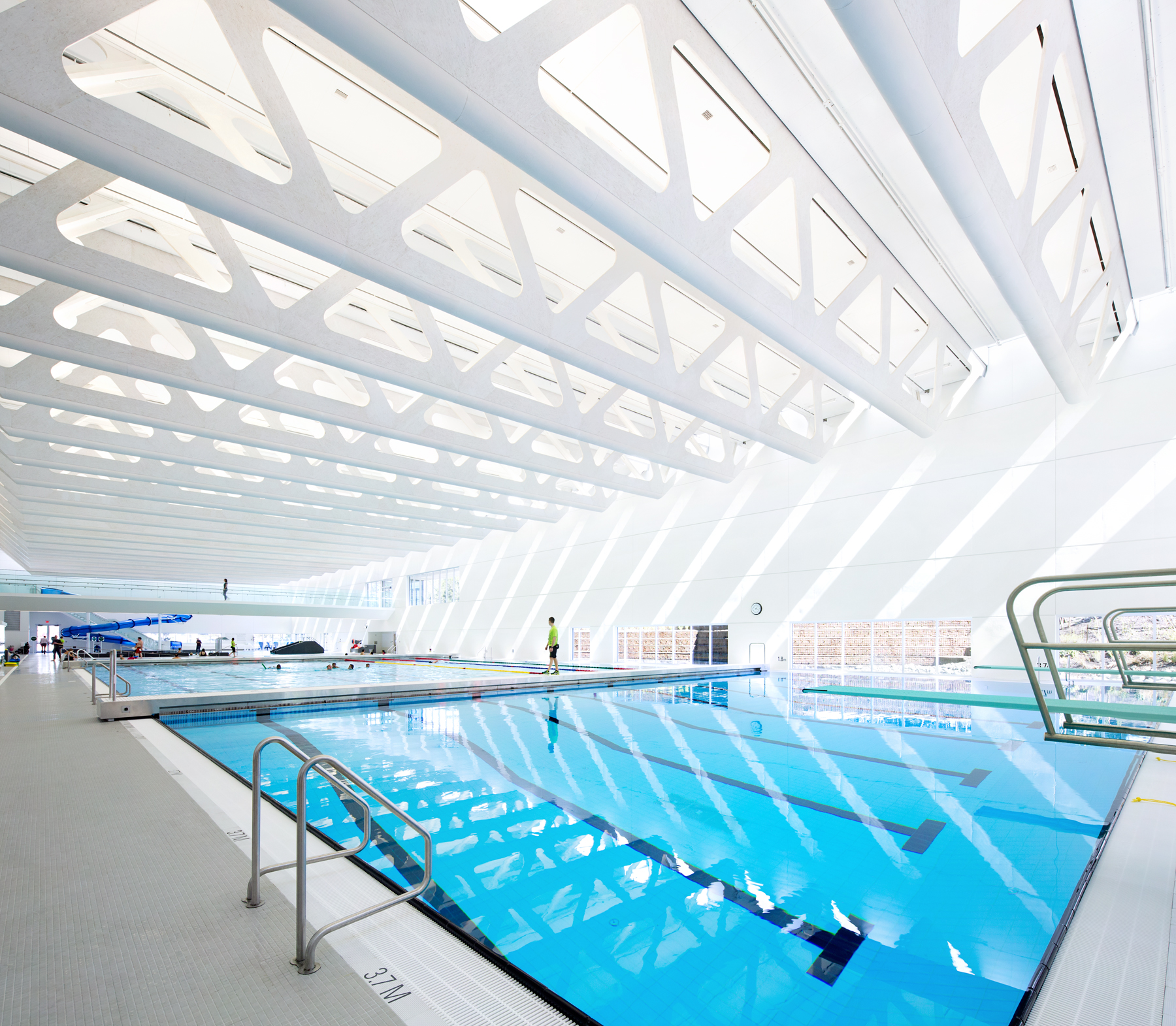
Guildford Aquatic Centre by Revery Architecture, Surrey, BC, Canada | Photograph by Ema Peter Photography
On them mindless scroll on Instagram:
“I just need to have either phenomenal light or something to hit me in the heart. Little by little, we’re becoming so immune to photography and this is so wrong. At the same time, this pushes the photographers to keep pushing forward and figuring out ways of engaging the viewer and understanding the psychology of the viewer.”
When people say they’ve never seen an image at that angle or in that light, or are surprised to learn that one of her photographs is actually taken in the same city that they live in:
“We’re so preoccupied on a daily basis with our phones…There’s a forgotten art of seeing. We’ve literally forgotten how to see: to look up, to see the building in that way.”
On telling the story from different angles, providing new vantage points, and acting like a tourist in a city:
“We’re so obsessed with the pretty and beautiful that we forget about how the ugly or the more commercial and the unexpected can bring you to those files…Don’t be afraid of that rawness. At the end of the day, life is raw.”
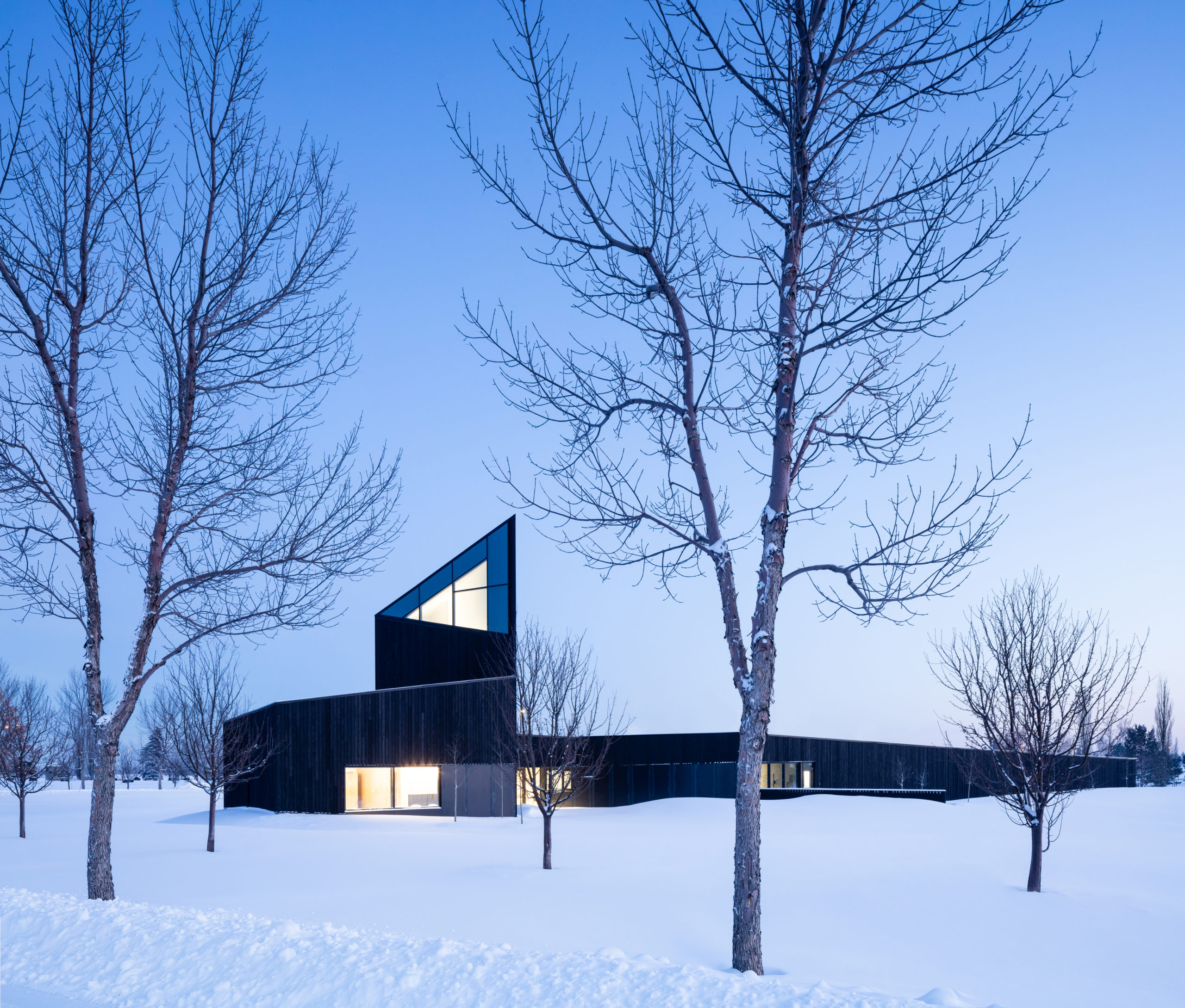
South Haven Centre for Remembrance by SHAPE Architecture, Edmonton, AB, Canada | Photograph by Ema Peter Photography
On engaging people, using them to give scale and motion, while making sure the building remains the hero:
“It’s one thing to photograph with that one figure and to do that really romantic type of an image, but it is a completely different thing to have the movement of the people, to catch that dynamic of what life really looks like and at the same time to make the building a hero…”
On paradox of needing patience to capture spontaneity:
“It’s really hard when you’re trying to capture the perfect people or you’re waiting for the perfect person, but the more you try to be open and the more you experiment, the more you will actually get out of it. You’ll manage instinctively to capture the motion.”
On the job of architectural photographers:
“Our top priority as architectural photographers is actually to create the type of an interest factor so people go and see the building or people want to hire the architect. We are looking at the romantic side but really what we are here for is to make sure that our architects get more work and that the images are so striking that the next client will hire them…. We need to inspire with imagery…
“I want to be there, this is my benchmark for photography, is ‘I want to be there and experiencing this,’ and I think this should be the benchmark for every photographer.”
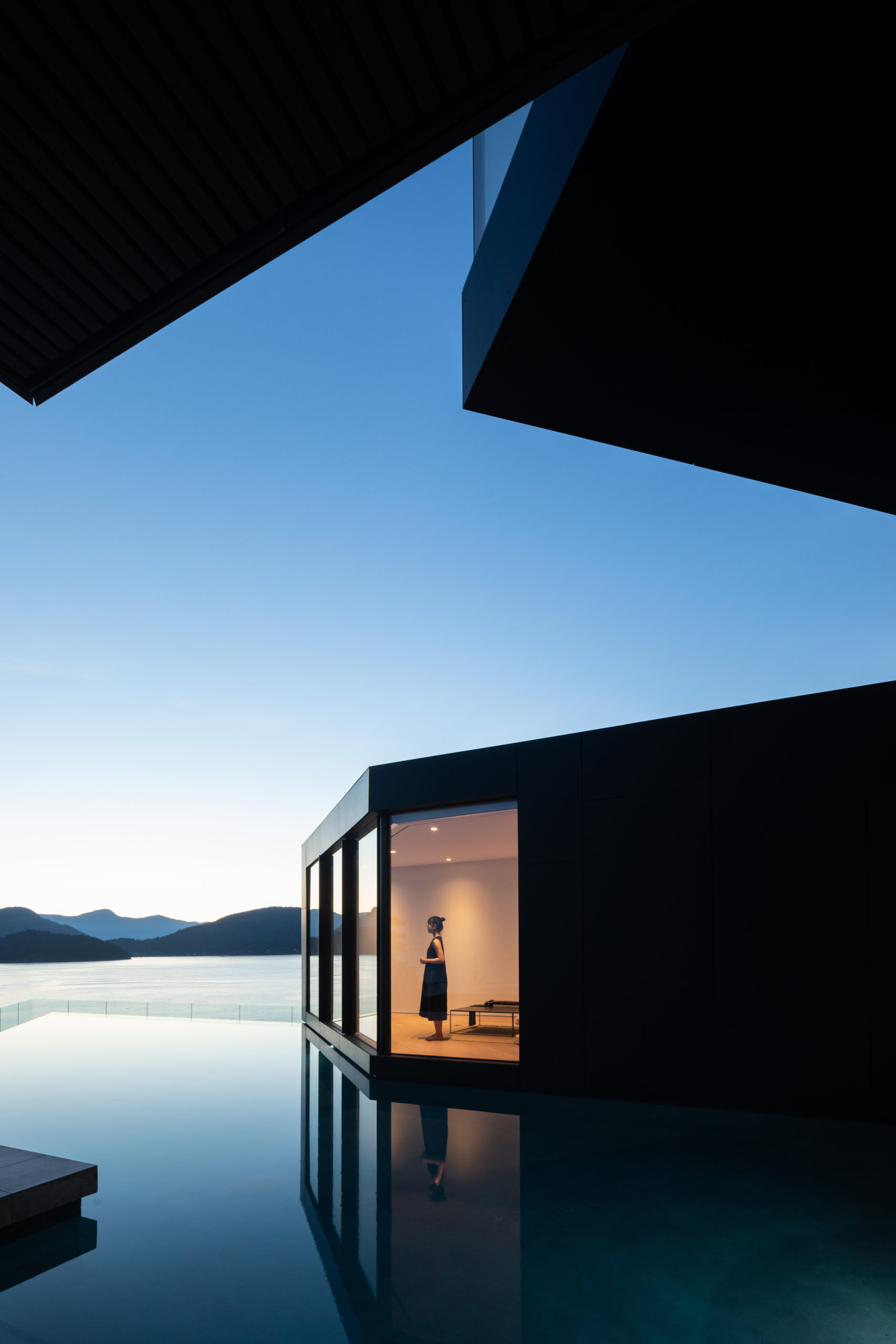
BlackCliff House by McLeod Bovell Modern Houses, West Vancouver, Canada | Photograph by Ema Peter Photography
On photographing architectural details, which always runs the risk of becoming too busy or flat:
“You can take this piece of a building and create something that is an architectural art. This is such a niche market — you’re really in a tiny little niche.”
On being attentive to changing light, accepting the circumstances and drawing on the moment for inspiration:
“Follow the natural light. Whether it’s pouring rain, or it’s snowing or its hailing, or whatever is happening, you need to try to learn to relax and to accept that this is what is happening and to try to catch it. And I know how not easy it is…
“I always feel a building has its own soul and it has its own character. You don’t treat it any differently than you would treat a person.”
As a photographer in Vancouver, on photographing in the rain (despite expensive equipment):
“I’m now seasoned in pouring rain… Those images, actually, when you post them on social media, the reaction is insane, because people don’t expect it. They cannot expect to see anything like this. They expect you to have perfect sunshine and running children, the storytelling of the house in the perfect environment. But nothing is perfect. We need to not forget that life is imperfect in many ways…The rainy shots are a different feel and look.”
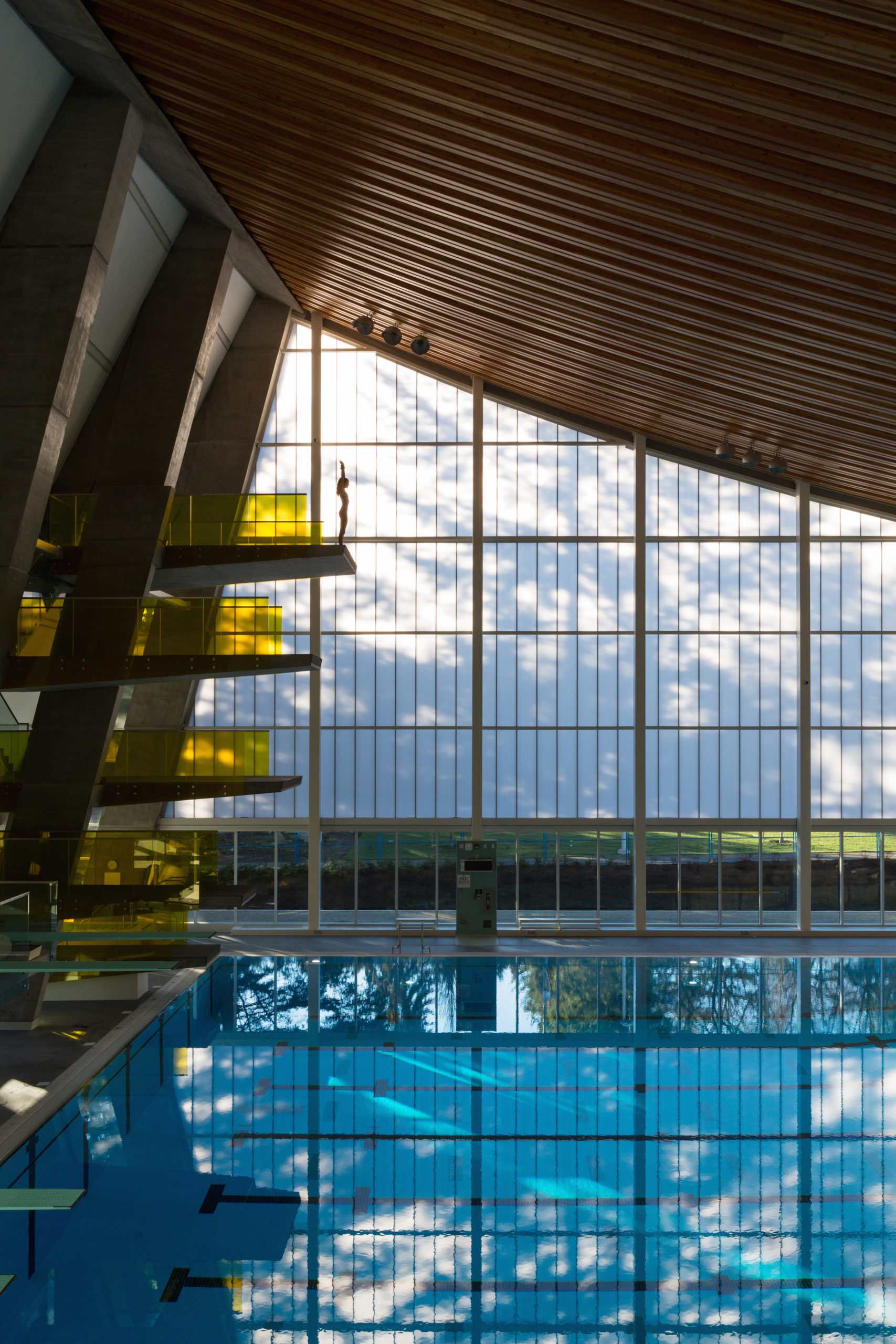
Grandview Heights Aquatic Centre by HCMA Architecture + Design, Surrey, Canada | Photograph by Ema Peter Photography
On pushing forward:
“Never stop questioning yourself. The moment you stop having the butterflies before the shoot, the moment you stop fearing that fear somehow, you’ve lost that whole desire to move forward.Fear is what pushes us forward and makes us fearless at the end of it.”
One the power of One Photo:
“As much as we don’t want to glorify one area of a project, we still need to have that one shot. There has to be one glory shot that makes people want to look more and more and more.”
Photos Featured In Ema’s Talk
In order of appearance:
1- Rene Burry – “Sao Paolo, Brazil’ 1960
2. Elliot Erwitt – New York 1955
3. Fernando Guerra – Slash, Abu Dhabi
4.Fernando Guerra – Slash, Abu Dhabi
5. Hufton+Crow – BIG, CopenHill, Copenhagen
6. Nic Lehoux – Studio Gang, Solar Carve building, New York
7. Nic Lehoux -Diller Scofidio +Renfro, The US Olympic and Paralympic Museum, Colorado Springs
8. Ivane Katamashvilli – Adjaye Associates, Winter Park Library and Events Center, Florida
9. Jeanette Hägglug – Ricardo Bofill
10. Ema Peter, HCMA, Grandview Aquatic Centre, Surrey, Canada
11. Ema Peter, Henriquez and Partners Architects, Cardero, Vancouver Canada
12. Ema Peter, Leckie Studio, UBC Arts, Vancouver
13. Ema Peter, Leckie Studio, Residential, Portland, USA
14. Ema Peter, Revery Architecture, Guildford Aquatic Centre, Surrey, Canada
15. Ema Peter, Polygon Gallery, Patkau Architects, North Vancouver, Canada
16. Ema Peter, McLeod Bovell Modern Houses, BlackCliff house, West Vancouver, Canada
17. Ema Peter, Polygon Gallery, Patkau Architects, North Vancouver, Canada
18. Ema Peter, ACDF and IBI, Parq Vancouver
19. Ema Peter, BIG, Vancouver House, Vancouver
20. Ema Peter, BIG, Vancouver House, Vancouver
21. Ema Peter, BIG, Vancouver House, Vancouver
22. Ema Peter, Duomo di Milano, Milan
23. Ema Peter, Design week Milan 2018, Jacopo Foggini, Interni House in Motion, Milan
24. Ema Peter, OMA, Fondazione Prada, Milan
Feast your eyes on the world's best architectural representation: the 2025 Vision Awards have been announced! Sign up for the program newsletter for future updates.
